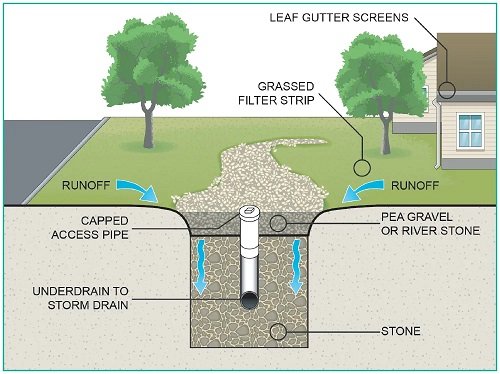Implementing systems that efficiently handle rainfall and surface runoff is crucial in urban planning and development. These initiatives are designed to mitigate the adverse effects of excess water on cities and communities. This article explores the significant advantages of stormwater management systems, highlighting why they are an essential component of modern infrastructure.
Enhanced Water Quality
One of the primary benefits of these systems is the substantial improvement in water quality. By filtering out pollutants as they travel through the system, these strategies significantly reduce contaminants in rivers, lakes, and oceans. This filtration process is vital for protecting aquatic ecosystems and ensuring the safety of the sources.
Flood Mitigation
Excess water can lead to severe flooding, causing damage to property and infrastructure and even posing risks to human life. Properly designed and implemented strategies effectively control the flow, significantly reducing the likelihood and severity of flooding events. By managing runoff more efficiently, these systems help protect communities and save on the costs associated with flood damage repair.
Groundwater Recharge
Replenishing underground aquifers is another critical advantage. Plans that allow water to infiltrate the ground, rather than directing it straight into canals, help to maintain the aquifer levels. This is particularly important in areas that rely on groundwater for drinking and irrigation, ensuring a sustainable supply for future generations.
Erosion Control
Surface runoff can be highly erosive, stripping away soil and damaging landscapes. Through the use of retention basins, swales, and green roofs, these systems help to slow down the flow of water, reducing its erosive potential. This is vital for preserving soil vitality and averting the degradation of arable land, both fundamental for sustaining agriculture and landscaping endeavours.
Economic Benefits
Implementing these solutions can also offer significant economic advantages.
By minimising reliance on extensive drainage networks and mitigating the threat of flood-related destruction, these systems offer significant long-term cost savings for both urban centres and individual homeowners. Additionally, green infrastructure elements, such as rain gardens and permeable pavements, can enhance property values and attract business investments by improving urban spaces’ aesthetic appeal and functionality.
Enhanced Public Health
One of these initiatives’ less immediately noticeable benefits is improving public health. By reducing the prevalence of standing water, these systems help to decrease the risk of diseases and pest infestations. Stagnant water provides an ideal breeding habitat for mosquitoes and other disease-carrying vectors, increasing the risk of illnesses like malaria, dengue fever, and Zika virus transmission. By managing runoff more efficiently and reducing its stagnation, these systems contribute to healthier urban environments and lower the burden of vector-borne diseases on public health.
Climate Resilience
As climate change increases the frequency and intensity of extreme weather events, including heavy rainfall, the role of these systems becomes even more critical. They offer a flexible and adaptable solution to manage increased volumes, making cities more resilient to the impacts of climate change. This adaptability is essential for ensuring the long-term sustainability of urban areas.
Biodiversity and Habitat Improvement
By incorporating natural elements into urban landscapes, these systems also play a vital role in enhancing biodiversity. The creation of wetlands, green roofs, and other habitat-friendly structures provides valuable spaces for wildlife, contributing to ecological balance and improving the overall environmental quality of urban areas.
Community and Recreational Benefits
Finally, these initiatives can also enhance community well-being and recreational opportunities. Parks and green spaces that incorporate water management features serve functional purposes and offer residents spaces for relaxation and recreation. These areas improve the quality of life, promote physical activity, and foster community among residents.
Conclusion
Implementing efficient stormwater management systems is essential for managing the environmental, economic, and social challenges of urbanisation and climate change. These systems are a vital component of sustainable urban development by improving the quality, mitigating flood risks, supporting aquifer recharge, and offering numerous additional benefits. Investing in such infrastructure is not only a practical choice for today but a crucial step towards securing a resilient and prosperous future for communities worldwide.




